Labels for Safety, Visuals and Facility ID Desktop Printers
Labels for Product, Wire and Lab ID Benchtop Printers
Labels for Safety, Visuals and Facility ID Desktop Printers
Labels for Product, Wire and Lab ID Benchtop Printers
Safety and Facility ID Desktop Printers
Product, Wire and Lab ID Benchtop Printers
Barcode Scanner and Printer Kits
Barcode Scanner and Printer Kits
PaintStripe Floor Marking Stencils
Valve Lockouts & Hose Lockouts
Group Lock Boxes & Permit Control
Brady Safety Lockout Tagout Services
Pipe Marker Accessories & Mounting Brackets
Maintenance and Production Tags
Calculators and Assessment Tools
Product Finders and Data Sheets
Barcode scanners are the tool that makes your life easier.
Currently, one of the hottest devices globally, the barcode scanner industry is booming. Barcode scanners connect what’s happening on the shop floor to supply chains, shipping and receiving, and inventory in warehouses. To businesses worldwide, barcode scanners are no longer just nice to have. They’re an essential part of operations, saving time, money and labor while creating greater efficiencies each time they’re used — especially if they’re programmable.
Here’s how they help businesses:
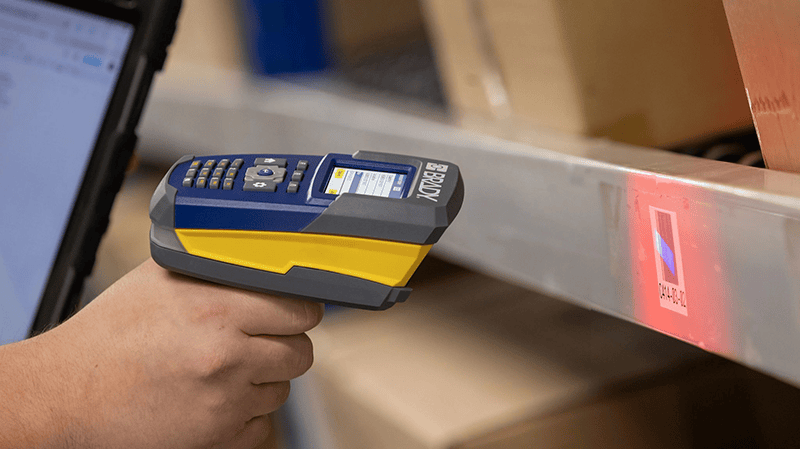
Manage assets and inventory
Capture shipping and receiving data
Identify products
Reduce human errors
Track raw materials, work in process items, batches, samples and finished products
Increase efficiency and effectiveness of operations
Plus, they help prevent errors and keep people safe. A recent barcode and healthcare practices study found that barcode technology reduced errors in patient drug dispensing up to 96%.1
From healthcare to logistics, warehousing to e-commerce, the list of industries that rely on barcodes is growing. According to Future Market Insights (FMI), the barcode scanner boom is largely caused by the emerging Industry 4.0 and the drive to digitize.2
More and more, real-time information is needed to make critical decisions about inventory, supply chains and labor — 3 pillars that really affect the health of modern businesses.
Establishing a robust barcode system and using industrial-grade programmable scanners will give you the capabilities to tackle your most complex operations – seamlessly.
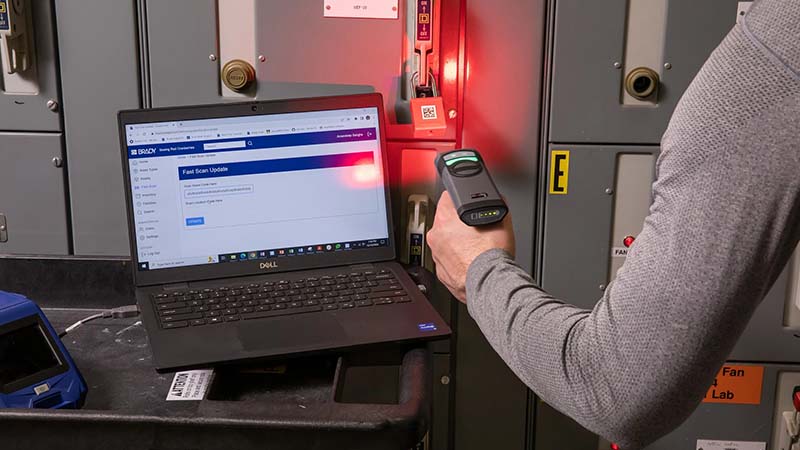
Though most barcode scanners have configuration settings that can be adjusted, not all can be programmed for high-level functions such as executing custom code or automating functions. Let’s look at scanners that are configurable and programmable.
These scanners can be programmed to change the way the device operates and reads barcode types (symbologies):
Programmable scanners are the go-to for industrial barcode applications as they offer the widest range of capabilities:
Besides integrating with other systems (such as an inventory management software), programmable scanners can be customized — almost infinitely — for nearly any application. Labs use them for tracking patient samples. Electronics manufacturing uses them for QA checks. Warehouses use them to manage inventory. And, the majority of businesses use them for data automation.
Although there are different types of identification technology, industrial applications rely heavily on optical image technology because they can read both 1 and 2-dimensional barcodes.
As the name suggests, a barcode scanner reads a printed barcode with a lens and red light beam, or an image scanner takes a picture. Then, it decodes it and sends the data string to a computer.
Radio Frequency Identification (RFID) readers use radio frequency waves to identify items and transfer data. They work in a system that consists of a reader, antenna, labels or tags, and software to translate the data. RFID scanners provide real-time feedback — without using a direct line of sight.
Which device you use depends largely on the application. Optical scanners need a direct line of sight to scan each barcode. The process takes a little more time and effort as scans are done individually. Visualize a worker picking up an item or running it under a scanner. With RFID technology, you can read multiple items quickly from greater distances.
A Barcode Scanner program is simply a set of instructions directing the scanner to record, parse, format, modify or enhance barcode data in specific ways.
Those instructions can be low-level changes to the scanner system (making a ‛beep’ sound to verify a scan) or higher-level changes (writing code to parse data) to allow scanners to interface with other systems.
The most common way to program a scanner is to write the instructions in a programming language, such as Javascript, and then create a 2-dimensional barcode representing that programming text. As the barcode scanner scans and decodes the programming barcode it loads that new set of instructions into its memory. Here’s an example of how it works:
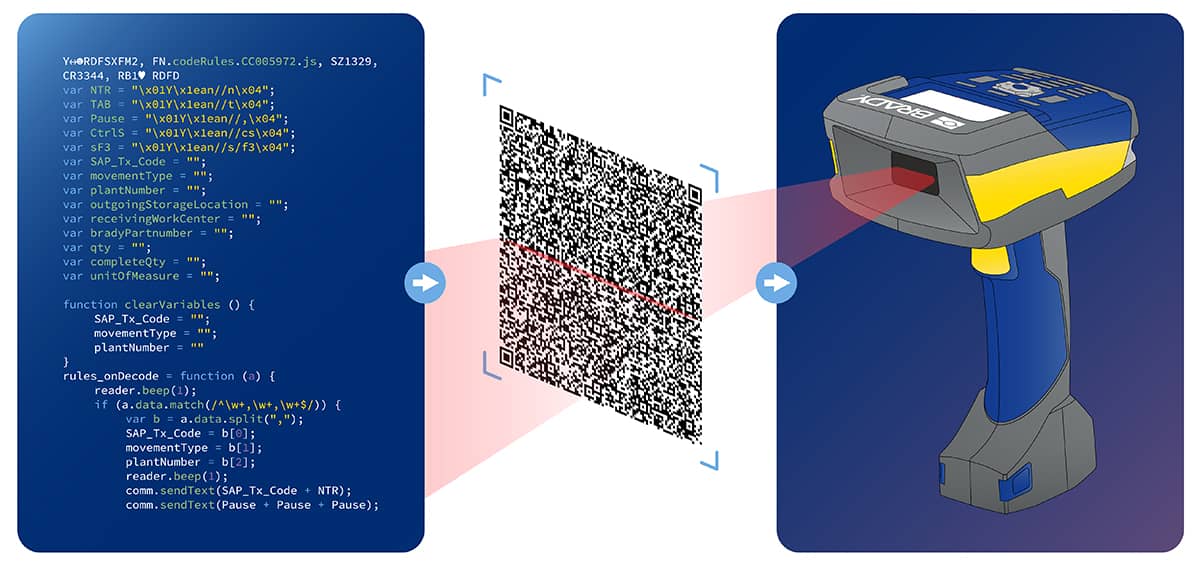
Now that you know the basic types of barcode scanners, their benefits and how to program them, you’ll need to consider how you’ll use them in your workflows. Common applications include:
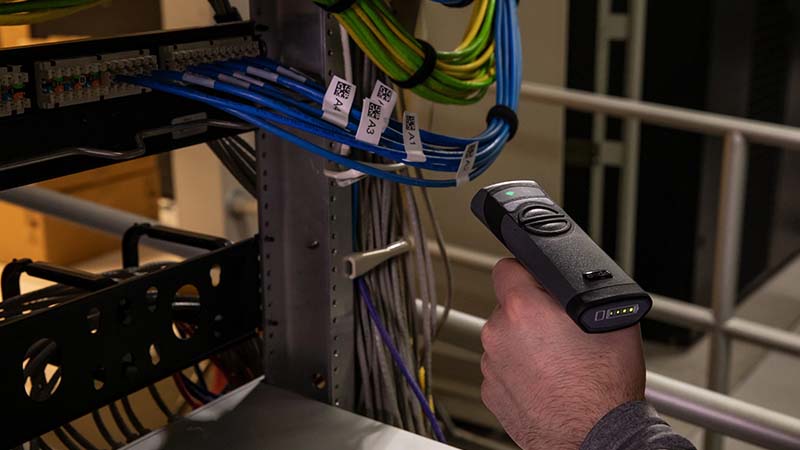
Let’s say you want to start using barcodes to better manage your inventory. Before you think about purchasing a scanner, you’ll need to consider how your new system will operate internally and externally (if you work with outside partners).
How many SKUs will need barcodes?
Do you need to align your scanning system by using the same types of barcodes?
Which existing systems and software platforms does the barcode system need to interface with?
Will you be using 1D or 2D barcodes, UPC Codes, QR Codes or industry-specific barcodes?
Does your barcode application require single scans or batches? Do you need long-range visibility?
Do you need to print your own labels? What conditions will your labels need to endure and still stay scannable?
Discover more ways you can connect it all — from the shop floor to the cloud — with Brady. We’ll help you meet your Industry 4.0 goals with customized solutions for:
Reference List:

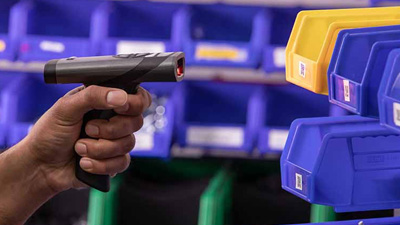

Gain immediate insights into your production systems and shift productivity into overdrive.
Analyze real-time data across your operations to make well-informed decisions in no time.
Implement world-class identification technologies with the world’s most trusted manufacturing leader.
Let’s have a conversation to discuss what a flexible manufacturing environment can do for you.
You will receive a response within 1 business day.